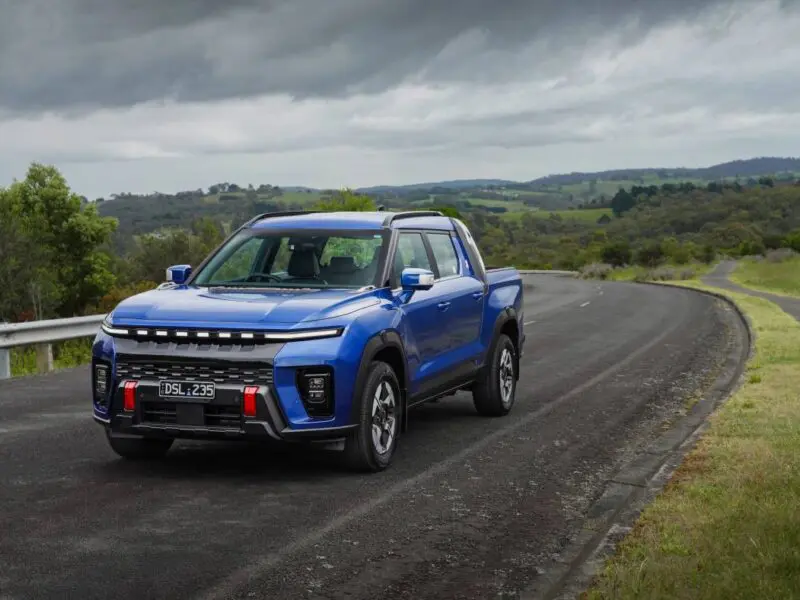
Australia’s Electric Revolution Accelerates: From Affordable EVs to Grid Innovation
Australia’s electric vehicle scene is surging forward faster than ever in late 2025. From record-breaking sales figures and new vehicle debuts to groundbreaking energy integration trials, the past week has showcased how deeply electric mobility is embedding itself into Australian life. The latest developments across the nation illustrate an industry not merely growing, but maturing—aiming for affordability, accessibility, and smarter integration with the power grid.
Record EV Sales and Expanding Market Diversity
The new report on Australian electric vehicle sales by month and model in 2025 reveals a market more diverse than ever before. October’s data sets a new high, demonstrating that Australians have firmly embraced electric mobility. Traditional luxury automakers like BMW and newcomers such as XPeng are making noticeable inroads, expanding consumer options beyond the early dominance of Tesla, BYD, and MG. The variety of available models suggests that the Australian market has outgrown its early niche status, moving toward mainstream acceptance driven by affordability and growing awareness.
Sales data continue to tell a larger story about infrastructure readiness, consumer confidence, and the shifting automotive landscape. That report solidifies the impression that government incentives and improved charging networks are finally paying off.
A New Era of Events and Engagement
Melbourne’s AEVA conference and Everything Electric Show celebrated this new wave of progress. As summarized in a video feature, the event captured the excitement of enthusiasts, industry experts, and first-time EV buyers alike. Interview segments reflected how the conversation around electric mobility has evolved—from technical debates about range and charging speeds to practical discussions about lifestyle integration, second-hand EV values, and renewable energy connections.
The atmosphere at Everything Electric hinted at a pivotal transition point for the electric movement in Australia: it is no longer just about cars—it’s about culture, community, and long-term infrastructure.
Tesla’s Landmark FSD Test Drives and Performance Debut
Among the standout stories was Tesla’s world-first Full Self-Driving (FSD) test drive event, which gave more than 600 Australian drivers hands-on experience over three days. Hosting such a large-scale FSD trial highlights Tesla’s confidence in its evolving autonomous capabilities and Australia’s growing role as a proving ground for emerging EV technologies. Participants reportedly experienced refined software behavior on complex urban roads, giving many their first direct encounter with near-autonomous driving.
Adding even more excitement, Tesla unveiled its new Model Y Performance variant during the Melbourne show. The model immediately drew attention for its upgraded power, handling, and acceleration—traits that reinforce Tesla’s image as a benchmark-setter in the EV space. The debut underscored how Tesla continues to anchor innovation discourse even as competitors close the gap.
KGM Delivers Australia’s First Affordable Electric Ute
One of the most highly anticipated Australian EVs this year arrived as KGM launched its fully electric ute, priced from around $60,000—below expectations. The arrival of a reasonably priced electric utility vehicle marks a turning point for many Australians who depend on work-ready, practical transport. Early reactions suggest that this will accelerate EV adoption in regional and commercial markets traditionally dominated by diesel models.
The ute’s imminent release also signals growing competition among manufacturers to capture the next major sales category: electric pickups and light commercial vehicles.
Heavy Industry and the Battery-Electric Frontier
Clean transport gains aren’t limited to passenger vehicles. BHP’s delivery of its first purpose-built battery-electric locomotives marks another milestone in industrial electrification. Operating on iron ore routes between the Pilbara and Port Hedland, these locomotives could cut significant emissions from one of the nation’s most carbon-intensive logistics operations. It’s a reminder that decarbonizing transport extends beyond urban roads into freight and mining sectors—areas where the environmental dividends are largest.
Energy Meets Mobility: V2G and Grid Resilience
Vehicle-to-grid (V2G) technology made big headlines thanks to Revcharge’s new offering, which became available to customers without the usual waiting lists. Showcased prominently at the Everything Electric show, V2G allows EVs to discharge stored energy back into the grid when needed—effectively turning personal vehicles into distributed energy resources. This leap moves Australia closer to achieving a sustainable, flexible grid powered not only by renewable generation but by smart storage located in driveways nationwide.
Complementing that development, new data from a shared V2G fleet trial overseas spotlighted how 50 EVs connected simultaneously can relieve peak demand pressures on local grids. The contribution of such programs paints a vision of a future where EVs are more than just transport—they become crucial participants in balancing energy supply and demand.
Remaining Infrastructure Challenges
However, even as innovation expands, interoperability remains a sticking point. A recent analysis of AGL’s kerbside chargers joining the Chargefox network revealed ongoing fragmentation in payment systems and network collaboration. Too many apps, inconsistent pricing, and limited roaming agreements still frustrate users. Until these issues are standardized, convenience barriers will persist for everyday drivers.
Changing Minds: Combating Misinformation
Beyond technology and infrastructure, cultural adoption remains critical. Commentary around misinformation and disinformation in the EV space emphasized that the next battlefront is perception. Misleading claims around EV cost, range, and reliability continue to circulate, slowing broad acceptance. Industry advocates urge collective investment in communication and outreach to help Australians understand that electric driving is not exotic—it’s pragmatic, affordable, and increasingly essential.
The Road Ahead
The past week encapsulates the diversity and momentum of Australia’s electric transformation. Affordable new releases are expanding the market’s reach. Cutting-edge experiments in automation and grid interaction are proving the resilience of electrified ecosystems. And corporate pioneers in heavy industry are demonstrating that sustainability can be engineered into even the toughest sectors.
If this pace continues, the story of electric mobility in Australia will soon shift from early adoption to full normalization—an evolution that combines environmental responsibility with economic opportunity, signaling that the electric age is truly arriving Down Under.
All EV Sales Research Team
11/18/2025
